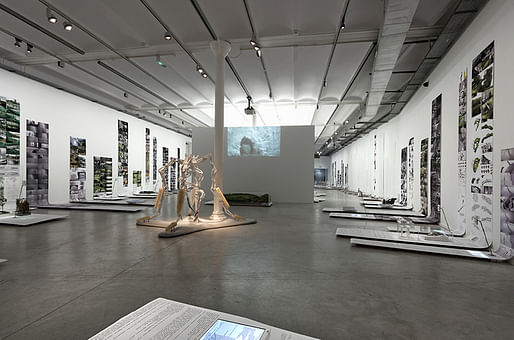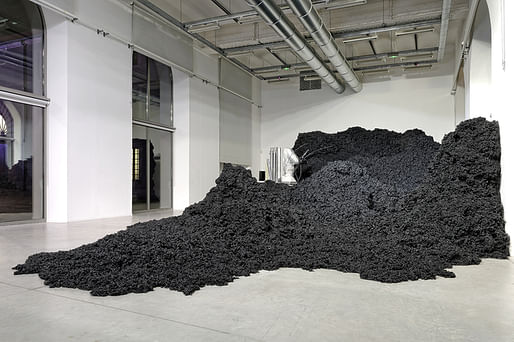
"Architects corrupt discourse, manipulate competition, make morality their banner and social responsibilities into an amulet or agit-prop," writes New-Territories, the constantly-mutating Bangkok-based, French-born architecture studio, previously known as R&Sie and elsewhere as M4 (MindMachineMakingMyths). “They live and breathe the profound hypocrisy of human nature, with which they are consubstantial. Space is their playground, their control and coercion lever."
Deferring the authorial power assumed by architects stands as a central concern for New-Territories, which is integrally associated with the architect François Roche (despite his best efforts). Founded in 1993, New-Territories is officially “headed” by the “Avatar”, a digitally-generated androgynous figure, who tethers together a practice that is more fragmented than unitary. The “Avatar” also stands-in for a diverse roster of collaborators, including the artists Pierre Huyghe and Camille Lacadee. It is therefore a strange task to present a survey of the work of New-Territories, let alone a retrospective. Nevertheless, that is the task that has been assumed by the FRAC Centre in Val de Loire, France.


About twenty years ago, the FRAC Centre staged its first exhibition of the work of New-Territories. Now, the art center has invited the studio back to present its work since, much of which is actually part of the FRAC’s collection. But, in typical New-Territories-fashion, the retrospective is simultaneously projective, subtitled “1993-1950 Flashback”, presenting “57 years of work, scenarios, projects, controversies, and foresights”.
The full title of the exhibition is “s/he would rather do FICTION MAKER”, which points to two of the primary lines of thought grounding the retrospective. First, the exhibition continues New-Territories’ exploration of “gender refusal”. For New-Territories, patriarchy infects architecture, surfacing as a colonialist relationship to territory and material—a will to dominate. Refusing the strictures of the gender binary becomes a tool to resist this dominating imperative. Second, “FICTION MAKER” suggests the capacity of architecture to act as fiction, “a mode of operation to model the world, to script it” and a means to “distort” reality. To this end, in the view of the “Avatar” (so to speak) architecture must cross-pollinate with other disciplines, such as cinema, writing, philosophy, biology and, pivotally, technology.



One of the main elements of the exhibitions, alongside a non-linear collection of past projects, is a robotic “prop”. Comprising a series of 3-D printers scripted with computational procedures, the apparatus substitutes “determinist parameters” for an “illogic logic”. In other words, new signals constantly disrupt the robot’s movements as it fills the space with black ABS plastic. The signals are generated from “pointless vectors” based on the very topology that the robot constructs, forming a hermeneutic, self-generating system.
Like with other projects by New-Territories, this installation, titled the “Shadow Room”, has more than one function. The mechanical process is, in fact, the content of the final scene of a film that is still in production, The Virgin Case. “…Let something happen, let it be made fuzzy by the very logic that drives this process, so as to corrupt the automaticity between 3-D fabrication technologies that are usually hostages to their procedures and thus produce an exact replica – for instance, 3-D printers,” writes New-Territories. “We propose that a robotic-computational operating procedure unfolding in real time serve as the vector of a design that emerges during the construction process itself.”
Check out some videos from the exhibition here:
More on the work of New-Territories and François Roche:
No Comments
Block this user
Are you sure you want to block this user and hide all related comments throughout the site?
Archinect
This is your first comment on Archinect. Your comment will be visible once approved.